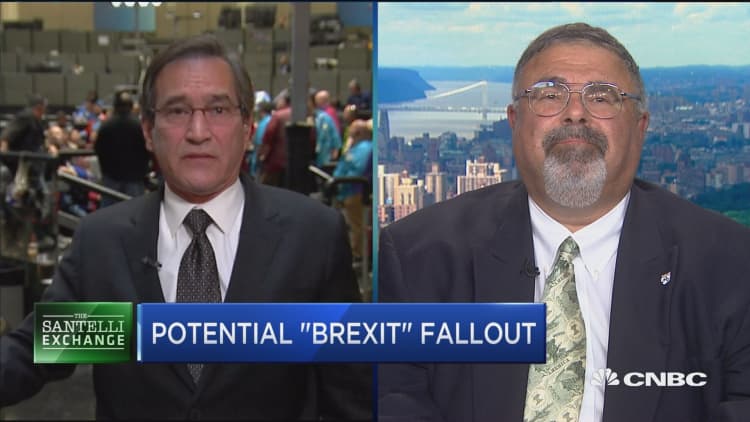
Negative interest rates are creating financial turmoil around the world and opportunity in the U.S.
Investor money has been flocking to American federal, corporate and municipal bonds throughout the year but at an especially intense level in recent weeks as global central banks continue to cut rates in hopes of stimulating the moribund world economy.
Fixed income-focused exchange-traded funds pulled in a one-day haul of $906 million on Tuesday, part of $40 billion in inflows thus far in 2016, according to FactSet. Equity funds, by contrast, have seen $6.7 billion in outflows. The story is similar for actively traded mutual funds, where U.S. equity-based funds have seen $75.6 billion in outflows and bond funds, according to TrimTabs, have taken in about $53.6 billion.
The move comes as an increasing number of governments around the world show negative yields. The Japanese 10-year government bond was at -0.13 percent Thursday, while the German two-year yield was at -0.54 percent and Switzerland's 10-year yielded -0.43 percent.
Private banks over the past several days have threatened various measures should the move to negative yields continue.
In the U.S., money has been flowing across asset classes, with corporate bonds and municipals showing particular strength. Government bond auctions of late also have been solid, with Thursday's reopening of $12 billion in 30-year bonds producing its second-lowest yield in history. Bond prices and yields move inversely.
The big ETF winner in terms of total inflows has been the fund, which tracks all investment-grade bonds across the government and corporate spaces. It has taken in $5.7 billion in 2016 and is up 3.1 percent year to date, which actually slightly trails the 's 3.4 percent gain. Over the past week, the iShares iBoxx $ Investment Grade Corporate Bond fund has pulled in just short of $430 million and has gained a solid 6 percent year to date, outpacing any of the major stock market averages.
Where the bond money is going
| Fund | Ticker | Flows YTD ($B) | Return YTD (%, as of Thu afternoon) |
|---|---|---|---|
| iShares Core US Aggregate | AGG | 5.7 | 3.14 |
| iShares iBoxx $ Investment Grade Corp | LQD | 3.56 | 5.97 |
| iShares TIPS | TIP | 2.71 | 4.08 |
| Vanguard Total Bond | BND | 2.53 | 3.27 |
| Vanguard Intermediate Corporate Bond | VCIT | 2.23 | 4.96 |
| SPDR Barclays High Yield | JNK | 2.18 | 4.66 |
| iShares JPMorgan USD EM | EMB | 1.9 | 6.57 |
| iShares 20+ Year Treasury | TLT | 1.86 | 11.35 |
| Vanguard Intermediate Bond | BIV | 1.79 | 4.49 |
| iShares US Preferred Stock | PFF | 1.34 | 1.85 |
| S&P 500 | 3.47 |
Source: Source: FactSet
After warning clients heading into the year that this was — finally — going to be the year that bonds fell out of favor, Wall Street is slowly changing its tune.
Deutsche Asset Management, for instance, is advising clients to go for fixed income. In its most recent chief investment officer outlook, released Wednesday, Deutsche said U.S. stocks are likely to be about 2.5 percent below current levels in 12 months.
"Against the backdrop of high political uncertainty and market volatility, we expect only moderate returns for 2016," said Stefan Kreuzkamp, Deutsche's CIO and managing director. "On a risk-adjusted basis, this favors bonds over equities."
That's not the only thing keeping the wind at the back of bonds: A plodding Federal Reserve, which is now widely expected to hold off on a rate increase this summer, will keep yields low and the dollar in check. Plus strengthening oil prices have dimmed worries over massive corporate bond defaults.
However, there are concerns that the market may be getting ahead of itself.
"The Fed's forward guidance is too aggressive, but the bond market's expectations are too complacent. The actual path forward for short-term interest rates should fall between those divergent estimates," Jim DeMasi, managing director at Stifel Fixed Income, said in a note to clients. "Current levels for intermediate and long-term Treasury yields seem unreasonably low in the context of sustained moderate economic growth and gradually firming inflation."
With negative rates spreading and the U.S. offering at least some yield, the money flow seems likely to continue. DeMasi recommends clients keep focus on shorter duration.


